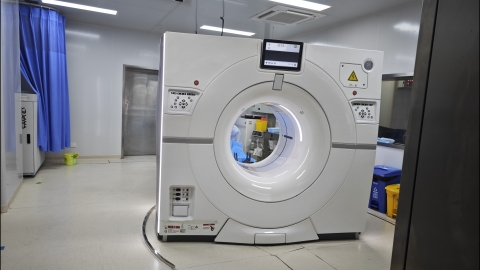What are the CT findings of acute cholecystitis?
In general, acute cholecystitis exhibits characteristic changes in gallbladder morphology, density, and surrounding tissues on CT imaging. The main manifestations include gallbladder enlargement, gallbladder wall thickening, gallbladder wall enhancement, pericholecystic exudation, and intraluminal gallstones. These findings are helpful for establishing a definitive clinical diagnosis. Detailed analysis is as follows:

1. Gallbladder enlargement: On CT images, the gallbladder appears significantly larger than normal. The normal transverse diameter of the gallbladder typically does not exceed 5 cm, whereas in acute cholecystitis, the transverse diameter often exceeds 5 cm. The gallbladder lumen becomes dilated, and the gallbladder wall is under tension due to inflammatory irritation, resulting in a full and distended appearance.
2. Gallbladder wall thickening: A gallbladder wall thickness exceeding 3 mm is considered abnormal. In acute cholecystitis, the thickening is usually diffuse and uniform. In some patients, the thickened wall may show a layered appearance.
3. Gallbladder wall enhancement: During contrast-enhanced CT scans, the thickened gallbladder wall shows marked enhancement. The enhancement primarily occurs in the outer layer of the wall, while the inner layer demonstrates weaker enhancement due to edema. This differential enhancement further highlights the inflammatory changes in the wall and helps differentiate acute cholecystitis from other gallbladder diseases.
4. Pericholecystic exudation: Inflammation can cause blurring of the fat planes around the gallbladder. On CT, this appears as patchy areas of low density surrounding the gallbladder. Some patients may also show pericholecystic fluid collection, typically located in the gallbladder fossa and exhibiting water-like density.
5. Intraluminal gallstones: Approximately 90% or more of patients with acute cholecystitis have gallstones within the gallbladder. On CT images, these appear as single or multiple hyperdense nodules or plaques within the gallbladder lumen, with densities higher than that of bile.
Clinically, identifying these characteristic features on CT allows for rapid and accurate diagnosis of acute cholecystitis, providing crucial information for determining subsequent treatment strategies. However, imaging findings should be interpreted in conjunction with the patient's symptoms and physical signs to ensure diagnostic accuracy.






